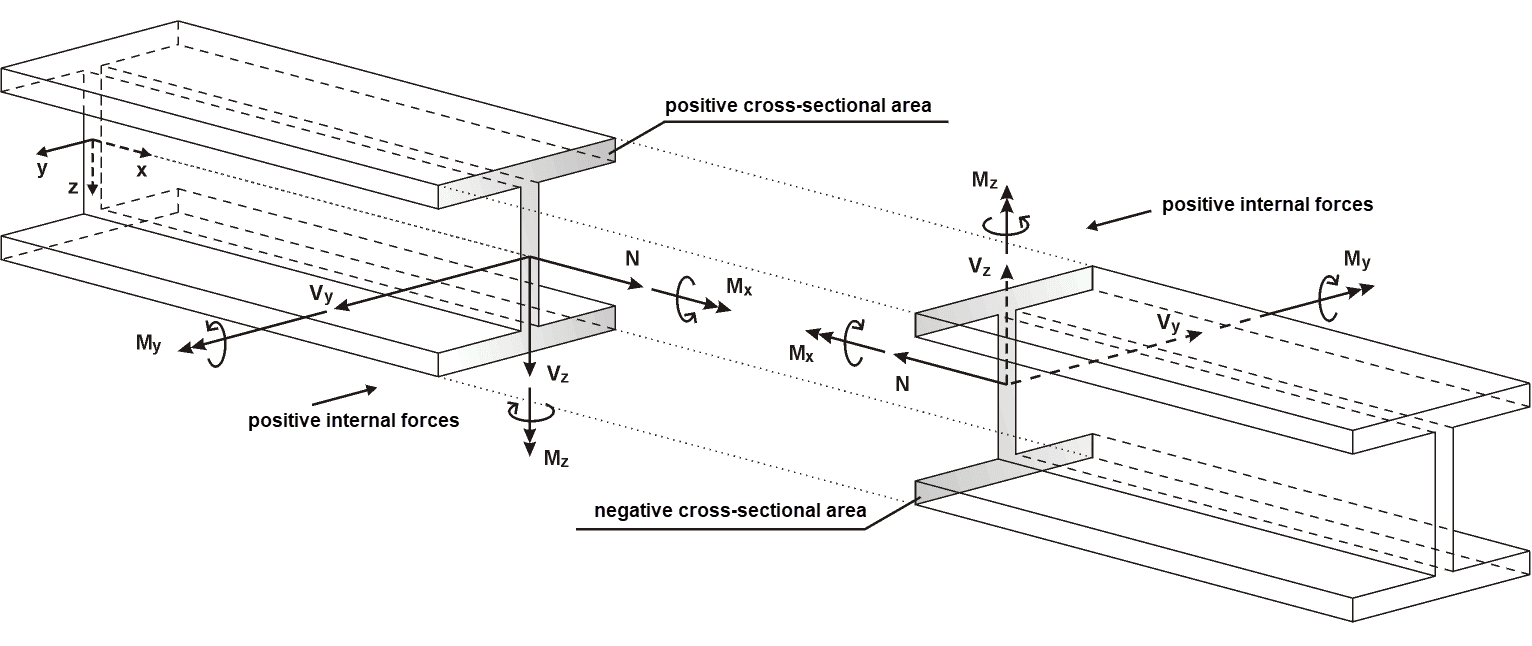Combined Axial, Bending & Shear Check (N+V+M Interaction) - Eurocode 3 §8.2.10
Structural members are frequently subjected to a combination of axial force (\(N_{Ed}\)), bending moment (\(M_{Ed}\)), and shear force (\(V_{Ed}\)). Eurocode 3 specifies how to account for the interaction of all three effects on the cross-section's resistance, primarily focusing on when the presence of high shear requires modification of the combined axial and bending resistance checks.
The Eurocode approach (EN 1993-1-1 §8.2.10)
The core principle is that allowance must be made for the effect of both shear and axial force on the moment resistance. However, the code provides a threshold based on the shear force level to simplify the check.

Step 1: Check the shear force level
First, compare the design shear force (\(V_{Ed}\)) - considering the relevant component if both \(V_{y,Ed}\) and \(V_{z,Ed}\) are present - with the design plastic shear resistance (\(V_{pl,Rd}\)) of the cross-section (calculated according to §8.2.6, see our Shear Check guide).
Step 2a: Case 1 - Low shear (\(V_{Ed} \le 0.5 V_{pl,Rd}\))
According to §8.2.10(2), if the shear force is less than or equal to 50% of the plastic shear resistance, no reduction of the resistances defined for combined bending and axial force (in §8.2.9) needs to be made due to shear.
In this common situation, you simply perform the standard combined axial force and bending moment checks as detailed in EN 1993-1-1 §8.2.9 and explained in our Axial + Moment Check guide.
Important note: Check your national annex to see if the 50% rule also applies in your country.
Step 2b: Case 2 - High shear (\(V_{Ed} > 0.5 V_{pl,Rd}\))
If the shear force exceeds the 50% threshold then the design resistance of the cross-section to the combination of moment and axial force must be calculated using a reduced yield strength for the shear area (\(A_v\)).
The reduced yield strength to be used for the shear area is:
Where \(\rho\) is the same reduction factor used in the shear-moment interaction check (§8.2.8):
How to apply the reduction
The code states the reduction applies to the yield strength for the shear area. This means that when you perform the combined axial and bending checks detailed in §8.2.9, the underlying cross-section resistances should theoretically account for this reduction.
Practical Approach: Due to the complexity of directly applying the reduced yield strength only to the shear area within the N+M checks, designers often rely on specialized software for detailed N+V+M cross-section checks under high shear, or potentially use conservative approximations, as given in our Shear+Moment guide.
Critical Limitation: The checks in §8.2.10 address the cross-section resistance under N+V+M. For members subject to compression and bending (beam-columns), the design is almost always governed by member buckling interaction.
Frequently asked questions (FAQ)
When do I need to consider N+V+M interaction?
You need to consider it when \(V_{Ed} > 0.5 V_{pl,Rd}\). If shear is below this threshold (and shear buckling doesn't govern), you only need to perform the N+M interaction checks from §8.2.9.
How exactly do I apply the \((1-\rho)f_y\) reduction?
The code indicates reducing the yield strength for the shear area. The practical approach is given in our Shear+Moment guide.
Does axial force affect shear resistance?
EN 1993-1-1 §8.2.6 (Shear check) does not typically require reducing the shear resistance \(V_{pl,Rd}\) due to the presence of axial force. However, EN 1993-1-5 (Plated Structures) may have interaction rules involving axial force when considering shear buckling.
Is this section check sufficient for a beam-column?
No. This checks the strength of the cross-section itself. A beam-column (member under compression and bending) must also be checked for overall buckling failure using the interaction formulas in EN 1993-1-1 §8.3, which is usually the governing check.